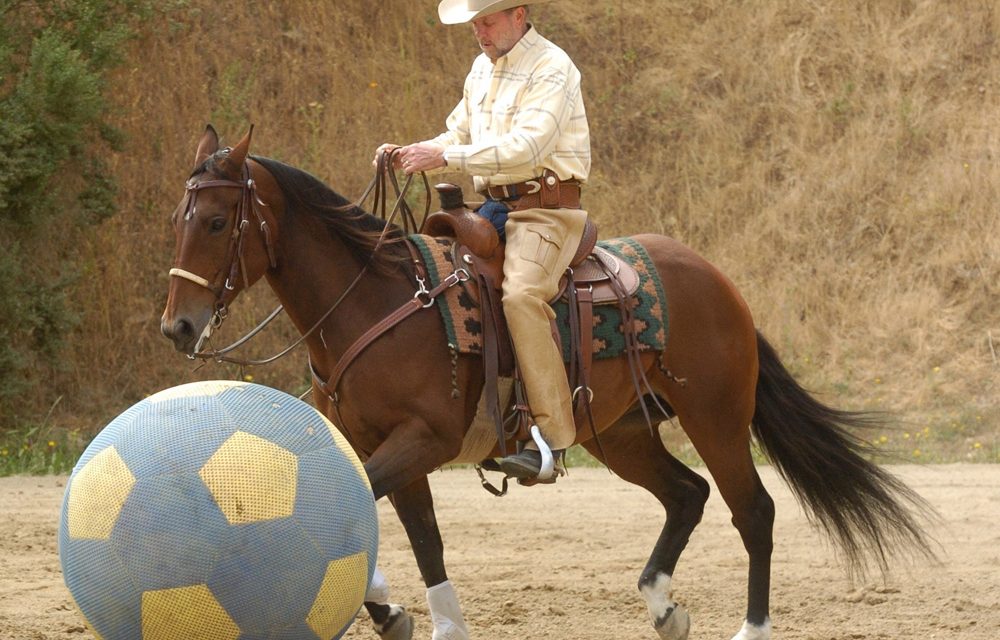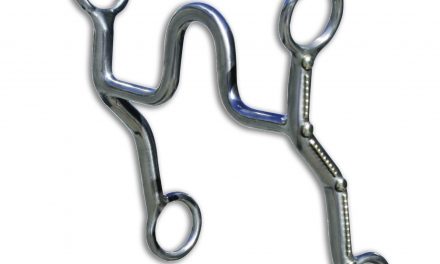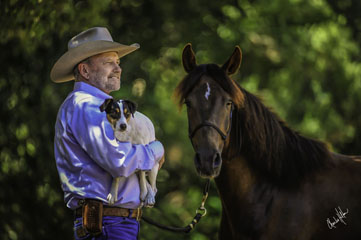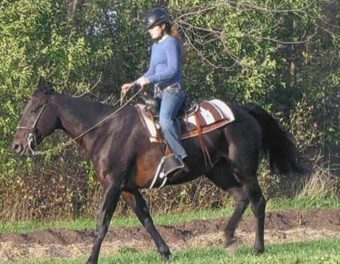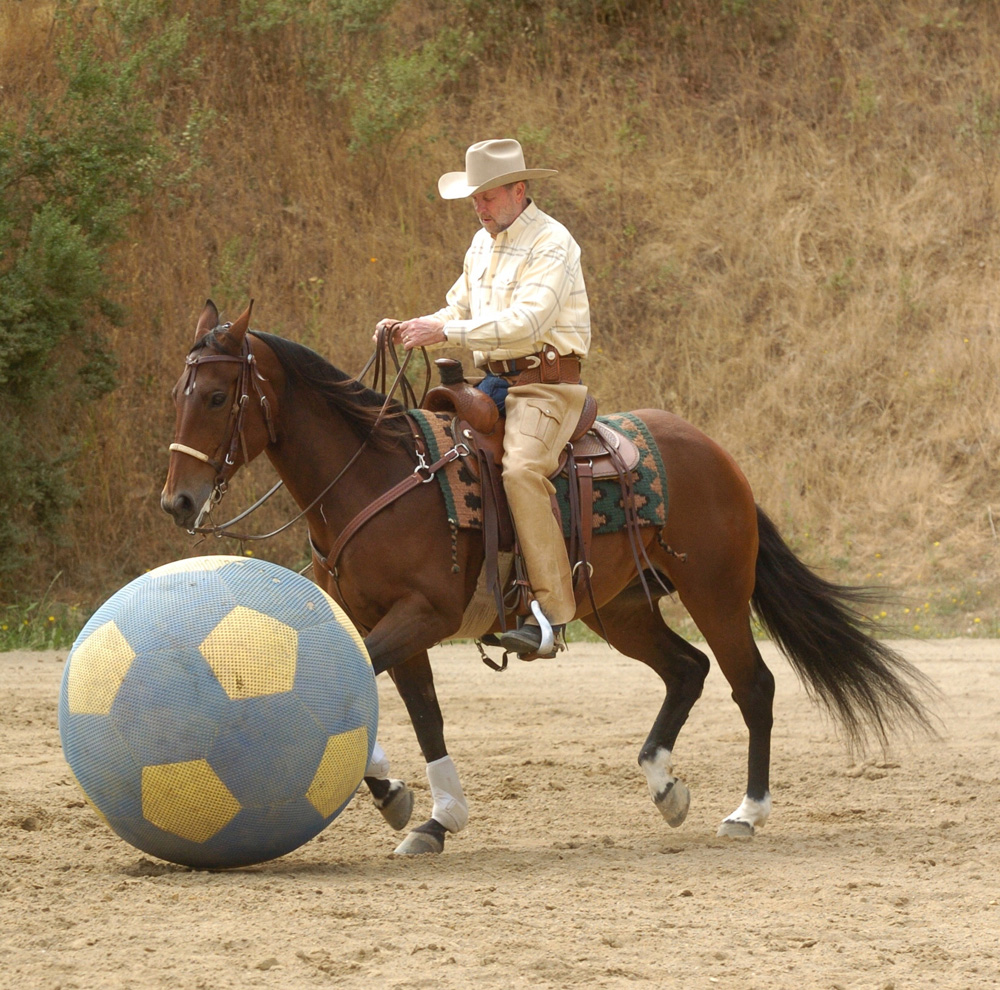
I have often discussed the need for de-spooking and dealing with the
distracted horse. I have described how to work with a variety of tools
including a tarp, a large ball and the birdie. These objects help a horse to
accept new, different thigs that pop up without warning. They teach a
horse to be quiet and emotionally sound. The change of direction
exercise is used in teaching a horse to go over a tarp. I am going to
review this exercise because this is a basic skill you will need your horse
to have before you teach him to go over a variety of other objects
including water, bridges and things that rattle under foot. There are
many objects that we can teach our horses to go over that will make
them more safe and solid on the trail.
For this exercise I work with a 12 or 14-foot line (depending on the size
of the horse) and I teach the horse to go around me, stop his feet and
pause. The reason we pause is that we don’t want this to be a running
exercise. When we simply have a horse lunge around us, the horse is
going to run. Horses are condition/response animals and they will simply
run if not controlled by the stop and pause. By controlling a horse’s feet,
we can control the mind and get the horse focused.
Using this exercise, we can teach the horse to go over poles. Once the
horse is comfortable going over one pole, we can add poles. We can
space the poles out, depending on the length of the horse’s stride and
gait and have the horse trot over the poles. From there we can teach the
horse to go over a log or a cavaletti. A horse may also be lunged over
small jumps. In doing this we are reinforcing the forward cue and
teaching the horse to be comfortable going over different objects at
different speeds. One of the benefits of trotting over poles is that it
teaches the horse to use his back. Jumping over an 18 to 24-inch bar also
teaches the horse to use his back.
We can teach our horses to go up and down hills by lunging on a side
hill. This helps a horse learn to get his footing. Many well-trained horses
are flat landers and don’t know how to come down a hill. You need to
make sure your horse knows these things before you take the horse out
on the trail. It is safer to find out what the horse does and does not know
and do the necessary training on the end of a lunge line.
You can teach your horse to cross a mud bog and a creek by lunging him
through the obstacle until he accepts it. You will know the lesson is
complete when the horse drops his nose down and walks through the
mud or water. You can let your imagination run wild as you never know
what you will find out on a trail. For example, if you have an old
mattress, teach your horse to go over it. Make a square out of poles,
railroad ties or four by fours and fill it with empty plastic bottles. The
horse will soon get used to the snapping and crackling under foot. It is
much easier and safer to do this type of training on the ground rather
than in the saddle.
Everything you do with the ball, the birdie and these lunging exercises is
preparation for getting your horse to accept new and difference things
and be safe out one the trail. Be patient, persistent, consistent in how you
ask and have a good time. Your trail rides will be safer and much more
enjoyable when your horse is prepared to deal with new things.

